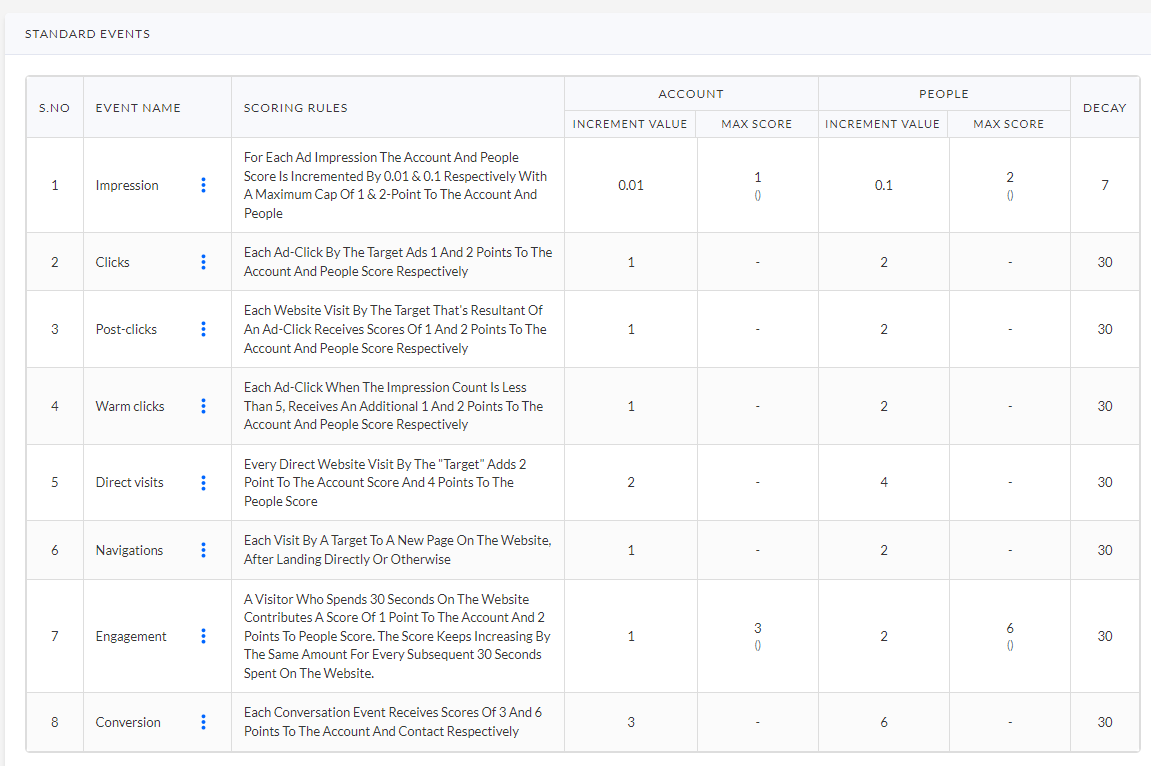The Engagement Scoring Model quantifies and monitors engagement levels of target accounts by assigning scores to specific interactions. Each event type has a unique scoring rule, increment value, and decay rate to ensure the scores remain relevant over time. This value can be customized to reflect the importance of the specific action within the engagement strategy.
This document outlines the model’s core components, scoring logic, and account journey stages.
Note: Not All Events as shown in the picture below are contributing to the score currently. Only the events mentioned under the next section is applicable. This picture will be updated accordingly v soon.

.png%253Ftable%253Dblock%2526id%253D3ce3a6ff-fef9-4aa2-b54d-2b8a9d72e12d%2526cache%253Dv2%3Fwidth%3D1500%26optimizer%3Dimage&w=256&q=75)